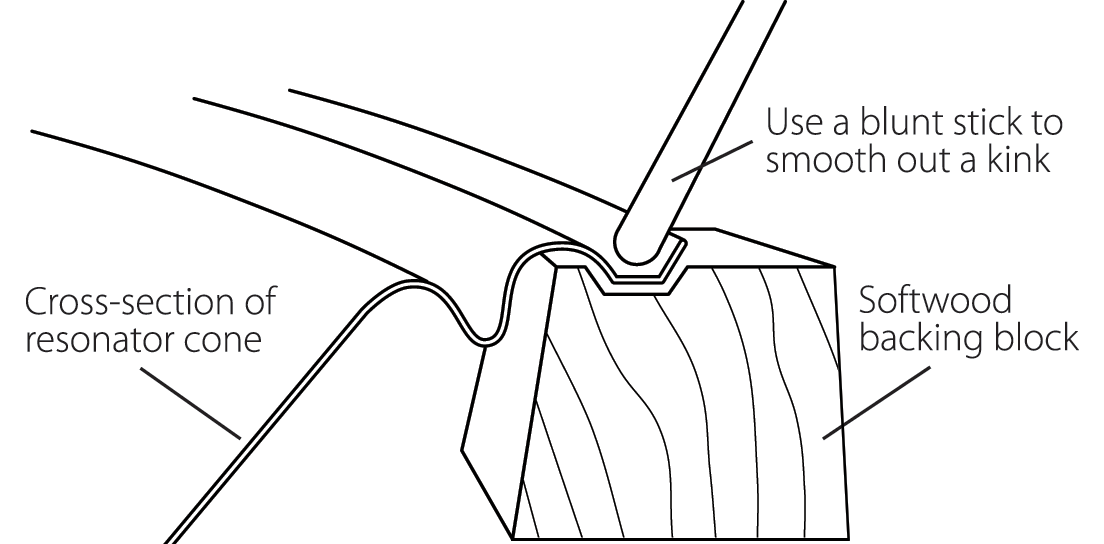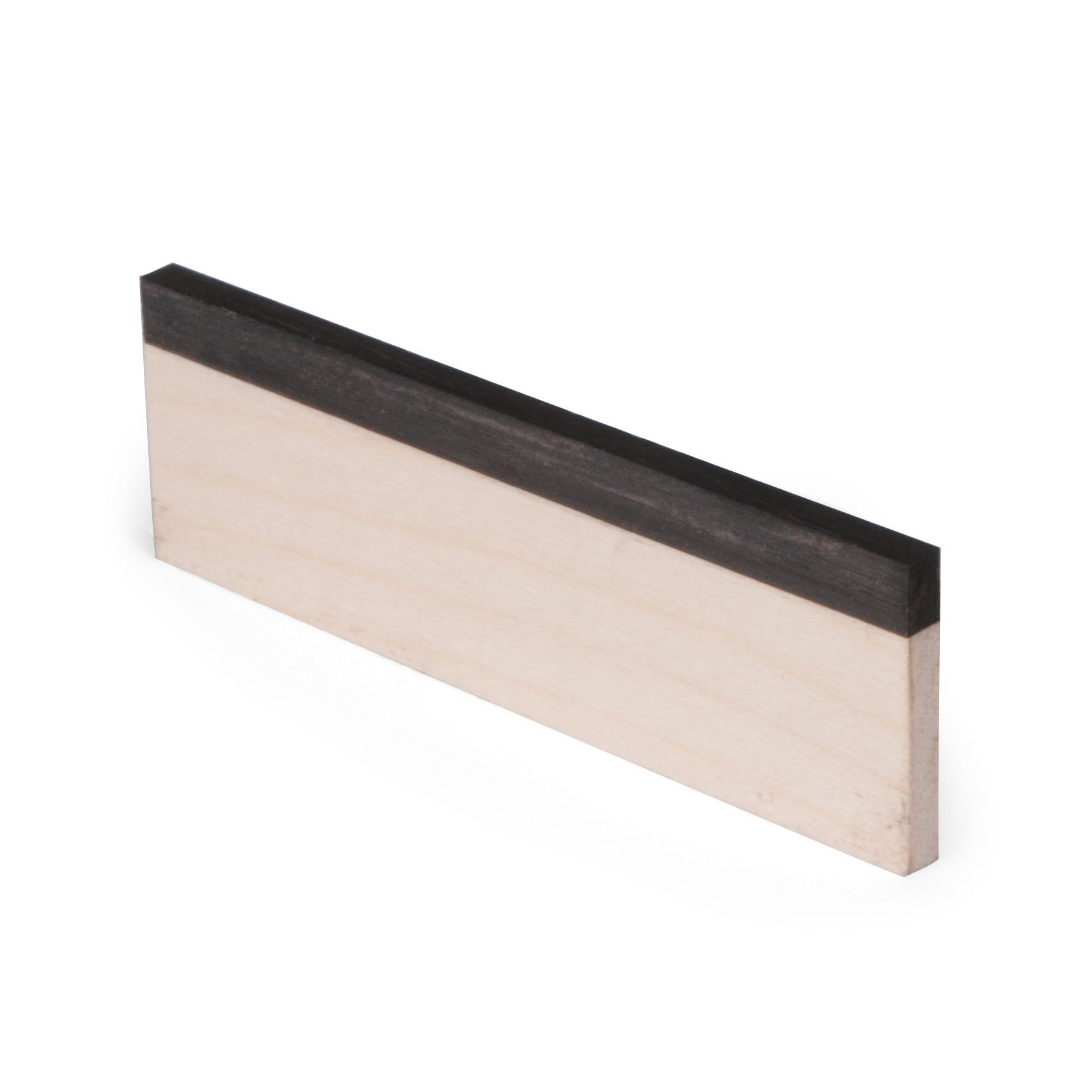Resonator Guitar Spider Bridge & Cone
Installation instructions for a Spider Bridge and cone.
The spun aluminum resonator cone we offer fits most dobro style instruments. However, the edge of the cone may need to be curled up a bit to fit the recessed wooden lip that the cone will sit on. Always handle the cone carefully! Here's some advice for fitting the spider bridge to the cone, and for removing dents or reshaping the edge of the cone.

Installing the spider bridge
The screw may feel stiff when you install it. This is normal; it's designed to resist vibrating loose. Tighten the screw only enough to rest the spider's legs on the edge of the cone. Overtightening risks bending the delicate cone. All the legs should contact the cone for the best sound. If they don't, you'll need to carefully bend them.
Bending the spider legs
Clamp the offending leg in a vise, and GENTLY bend it a slight amount in the correct direction. You can also support the leg on two blocks of wood and use a clamp to gently bend the leg. Either way, be careful—the spider is a cast part that can break easily!
Correcting bent cone edges
The cone rests on the narrow flat area at its outer edge. If this area becomes kinked, it could cause a buzz when the instrument is played. Press, rub, or burnish out the kink with smooth blunt tools made from scraps of softwood such as pine. Work against a softwood backing surface (pine works well here, too). You can chisel or file an appropriate shape into the backing wood for better results, as illustrated.
Saddle material
The recommended bridge saddle material for Dobro or National guitars is hard maple. Bone, metal and Micarta are sometimes used, but maple's still the best for authentic tone.
